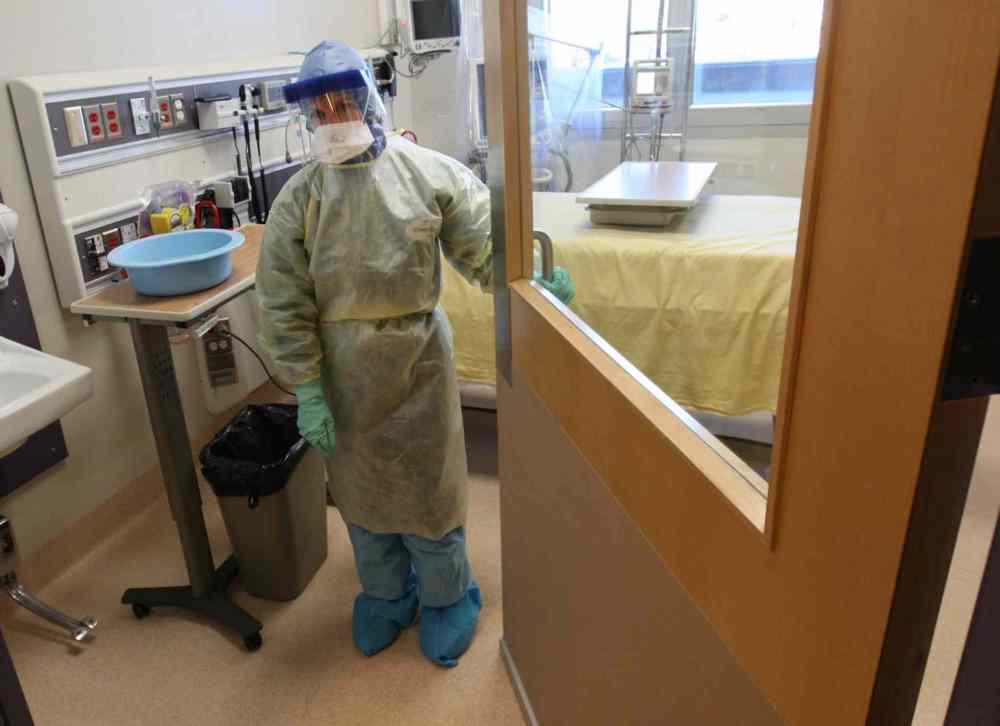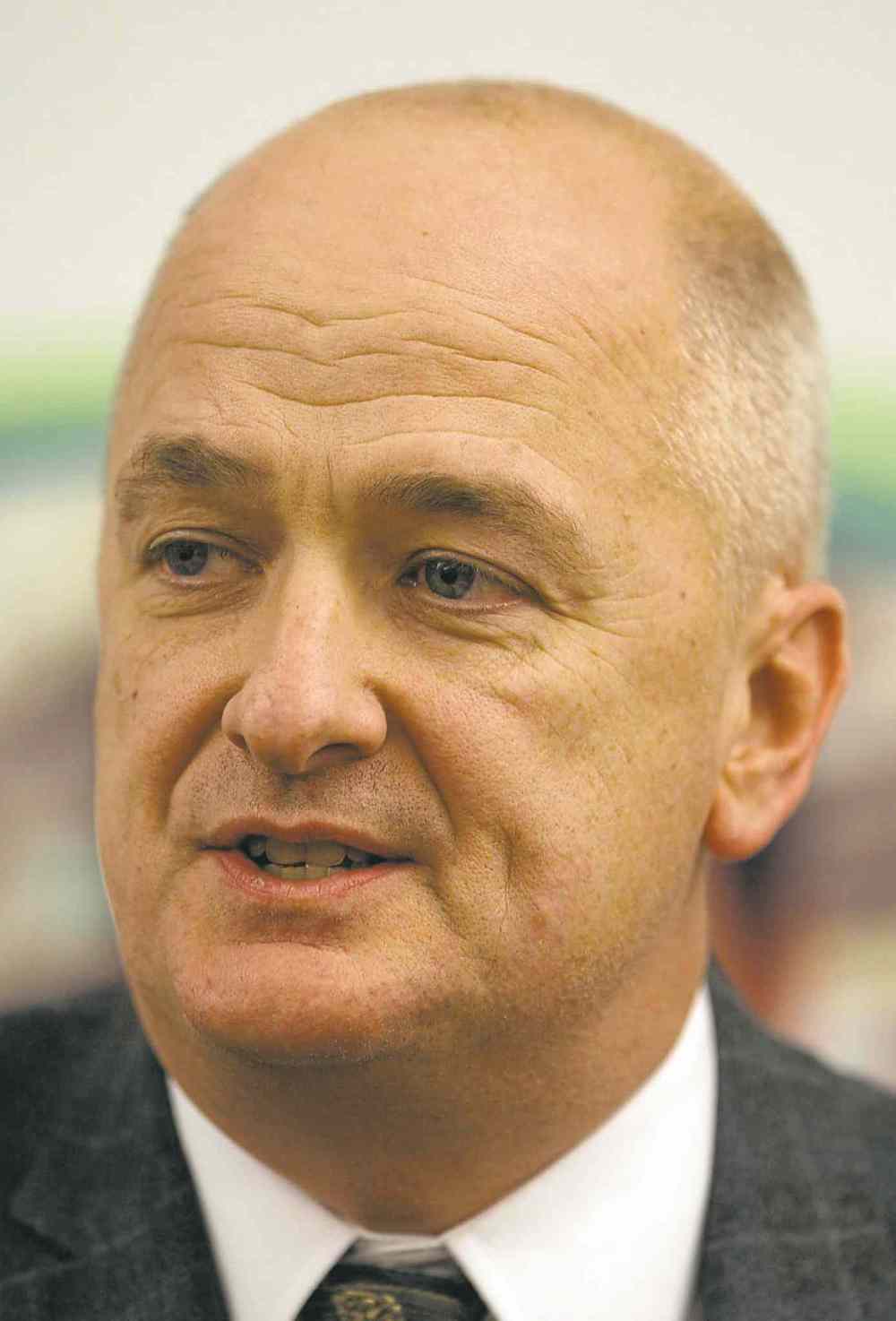HSC shows off special isolation rooms
Hospital sets aside 10 units for possible patients
Advertisement
Read this article for free:
or
Already have an account? Log in here »
To continue reading, please subscribe:
Monthly Digital Subscription
$1 per week for 24 weeks*
- Enjoy unlimited reading on winnipegfreepress.com
- Read the E-Edition, our digital replica newspaper
- Access News Break, our award-winning app
- Play interactive puzzles
*Billed as $4.00 plus GST every four weeks. After 24 weeks, price increases to the regular rate of $19.00 plus GST every four weeks. Offer available to new and qualified returning subscribers only. Cancel any time.
Monthly Digital Subscription
$4.75/week*
- Enjoy unlimited reading on winnipegfreepress.com
- Read the E-Edition, our digital replica newspaper
- Access News Break, our award-winning app
- Play interactive puzzles
*Billed as $19 plus GST every four weeks. Cancel any time.
To continue reading, please subscribe:
Add Free Press access to your Brandon Sun subscription for only an additional
$1 for the first 4 weeks*
*Your next subscription payment will increase by $1.00 and you will be charged $16.99 plus GST for four weeks. After four weeks, your payment will increase to $23.99 plus GST every four weeks.
Read unlimited articles for free today:
or
Already have an account? Log in here »
Hey there, time traveller!
This article was published 21/10/2014 (4010 days ago), so information in it may no longer be current.
Winnipeg’s largest hospital has set aside 10 isolation rooms for potential Ebola virus patients and trained 36 physicians — and many more nurses — to tend to them.
Health Sciences Centre put on a show-and-tell for the media Monday, listing the resources it has marshalled for a possible fight against the lethal disease that has mobilized medical officials around the globe.
Journalists observed nurses donning and doffing special protective equipment. Staff will don two types of protective gear depending on the situation — one that takes longer to put on and is more comfortable and one that can be put on more quickly but is less comfortable. Both are equally safe for use.

Three dozen doctors have signed on to be available for potential Ebola patients between now and Dec. 31. Each of the MDs — mostly intensive care and emergency room physicians and anesthetists — have taken a two-day course and will be refreshing their skills one day a month. Much of the training centres around use of the specialized protective equipment.
The 180-square-foot isolation rooms have negative air pressure, meaning when doors open, air is drawn into the room and not out. Each has an anteroom, where air pressure is also negative compared with the rest of the hospital.
“These rooms are separated by doors, and only one door can open at a time,” said Dr. Perry Gray, Health Sciences Centre’s chief medical officer. “Therefore, should anything escape into the anteroom, you still have a negative pressure compared with the hallway and therefore, limiting the spread of any airborne organisms.”
Six of the 10 isolation rooms are tucked away in a unit that is separate from other patients. “It is essentially a dedicated area separated from other clinical areas by doors. We can lock those doors if necessary,” Gray said.
The rooms have been used in the past in other special situations, including treating injured Canadian soldiers who had served in Afghanistan.
If a patient arrived at the hospital in an ambulance or showed up at the ER with symptoms of Ebola, they would be whisked away to the unit along a route within the hospital that would minimize their exposure to other patients. A service elevator would be utilized to further isolate them.
Health Sciences Centre is the only hospital in Manitoba designated to treat a potential Ebola patient. It likely got a head start on most other designated Canadian facilities, as it was put on alert in August when three members of the National Microbiology Laboratory arrived home from West Africa. The hospital started planning in case one of them got ill. None did.
“The positive thing about that experience is that it allowed us to develop a very solid plan very quickly,” said Helen Clark, head of emergency response and patient transport with the Winnipeg Regional Health Authority. Those plans continue to evolve as the WRHA and HSC receive new information from the Public Health Agency of Canada, the provincial Health Department and other agencies.

Gray said each potential Ebola patient will be cared for by two nurses, who will work with that person exclusively. A third specially trained nurse will ensure protective equipment worn by nurses is donned and doffed correctly. The third nurse will also observe the actions of the treating nurse.
To minimize the likelihood of disease spread, the special rooms will have dedicated equipment that will not be removed for use by other patients. Patients, wherever possible, will remain and receive treatment in the isolation room. And supplies will be disposable whenever possible.
“If it can be thrown out, that’s what we want to use,” Gray said. “We don’t want to use any items that have to be sterilized or reused.”
Intensive care and emergency room physicians will be among the main doctors tending to potential patients, who could be mildly ill when they arrive (and receive tests to rule out Ebola) or very ill. The forte of both types of physicians is an ability to detect patients who are deteriorating quickly, Gray said.
larry.kusch@freepress.mb.ca
History
Updated on Tuesday, October 21, 2014 7:16 AM CDT: Replaces photo
Updated on Tuesday, October 21, 2014 7:39 PM CDT: Corrects typo

